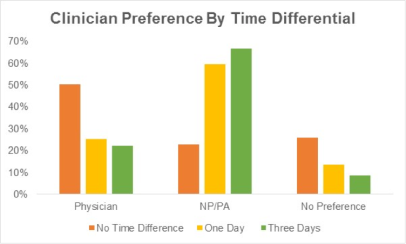
By Sarah Kliff, Published: June 10, 2013 at 1:30 pm
Here’s one question that keeps health policy wonks up at night: As millions of Americans gain health insurance coverage over the next decade, who will see them?
It may well not be a doctor: The Association of American Medical Colleges projects that the United States will have 91,500 too few physicians to treat the country’s medical needs. It might be a physician assistant or a nurse practitioner. States like California are moving forward on legislation that would give providers like this stronger abilities to practice independently, with less physician oversight.
A new paper in the journal Health Affairs suggests certain demographics might be just fine with that.
“We’ve been expecting a shortage of physicians for awhile,” Clese Erikson, who directs the Association of American Medical Colleges’ Center for Workforce Studies. “Nurse practitioners and physician assistants are seen as an important part of securing access. We wanted to find out consumers’ interest in seeing them.”
Erikson co-authored the new research, which surveyed over 2,000 patients who had received medical care over the past year and asked them a few questions on who they would like to receive care from in a follow-up situation. If the patient had a worsening cough or frequent, painful headaches, what type of medical provider would they want to see.
If a doctor was available that same day, most respondents wanted to see the physician. But if seeing the doctor meant a day or two wait, preferences tended to switch to nurse practitioners and physician assistants. Here’s what that looks like in graph form, courtesy of Project Millennial.

With a one-day wait, preference for seeing a nurse practitioner or physician assistant jumps from less than 30 percent just over 59.6 percent.
“Particularly when there is a time trade off, patients will prefer to see an NP or PA rather than waiting to see a physician,” Erikson says.
Erikson’s team also found some big breakdowns by age, when they asked respondents about joining a clinic where both doctors and other providers accepting new patients, with young people more preferring to be seen by a nurse practitioner or physician assistant than those whose first choice would be a doctor.

Older Americans, meanwhile, overwhelming prefer to see a physician. That’s a challenge, given that these are the people who tend to require the most health care and who take more frequent trips to the doctor.
Still, there does seem to be some opportunity here as it relates to the health care law: One other finding from Erikson’s work is that the uninsured and Medicaid patients tended to show less strong preferences for seeing a physician than those with private insurance coverage or Medicare. These are the exact populations that the health care law will bring into the system.
“While they don’t necessarily prefer seeing a nurse practitioner or physician assistant in greater numbers, they were certainly more open to it,” Erikson says. “The fact that they’re open is encouraging.”

